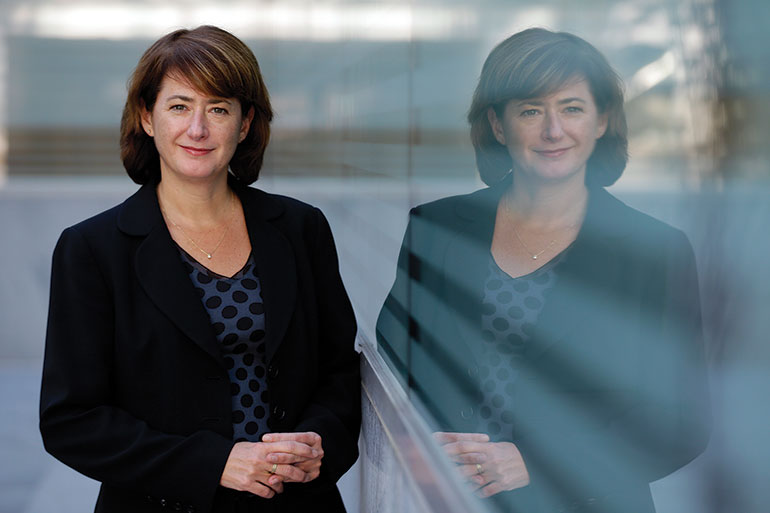Judges don’t leave their emotions behind when they take the bench.
When the 18-year-old girl appearing in court before him laughed inappropriately, the judge angrily increased her bond. When she responded to that with an obscene gesture, he snapped, sentencing her to 30 days in jail. Then a court-recorded video of the incident went viral.

In a February training session for new federal judges at the Federal Judicial Center, Terry Maroney used the “angry judge” video to illustrate a truth she believes should be openly acknowledged: Judges can’t turn off their emotions when they enter the courtroom. “The cultural message is that judges are supposed to be poker-faced,” Maroney said. “We tell judges, ‘If you ever detect an emotion, squelch it.’ That’s an extremely bad idea. You’re going to have emotions as a judge, no matter how many people tell you that you shouldn’t or you won’t.”
Maroney, professor and co-director of the Social Justice Program, was invited to teach the FJC session after her 2011 article, “Emotional Regulation and Judicial Behavior” in the California Law Review captured the attention of Judge Jeremy Fogel of the U.S. District Court for the Northern District of California. Fogel directs the FJC, and he asked Maroney to meet with its research and training team to discuss ways to integrate her work on emotion into judicial training. “It’s one of those moments academics dream about,” Maroney said.
Maroney worked with Fogel and Judge David Hamilton of the U.S. Court of Appeals for the Seventh Circuit to present a panel discussion on the impact of emotion at sentencing at the National Sentencing Policy Institute last November. Attended by an audience of more than 200 federal judges from both district courts and courts of appeals, the presentation was a hit. “We got a terrific response,” Maroney said. “Judges really wanted to talk about this issue.” The trio updated their presentation for the FJC orientation session, which was attended by 45 new judges.
Maroney was particularly eager to work with judges recently appointed to federal trial courts. “Judges are going to experience a number of emotional challenges during the time they sit on the bench,” she said. “We started a conversation about the emotional challenges judges face at criminal sentencing hearings, in civil trials, in their dealings with attorneys, and in tackling touchy issues about which they have strong feelings.”
The Florida incident was one of several examples Maroney used to illustrate her point that judicial anger can be positive or negative. For example, expressing anger can sometimes “serve an important teaching function—showing the defendant the gravity of her situation or demanding appropriate respect for authority,” while at other times it “might instead reflect intemperance and, stated bluntly, a power trip,” she said.
Anger was not Maroney’s only focus. As an example of appropriate expression of sorrow, she also cited the emotion displayed by Justice Bonnie Wittner in New York State Supreme Court at the January sentencing of a serial killer. When sentencing the man, Wittner cried, and her tears were “unusual enough that it got reported, but in a very nonjudgmental way.” The judge’s display of emotion “was extremely meaningful to the victims’ families (because) it meant she cared,” Maroney said. “This is not a judge who is walled off and has lost all touch with humanity.”
Maroney will continue to work with the FJC on the issue and is slated to give a series of workshops for state court judges over the coming year.
Maroney’s article, “Angry Judges,” appeared in the Vanderbilt Law Review in 2012.